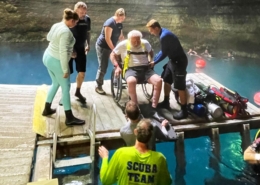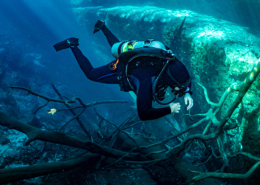It’s Time To #BYOC
“Today in the Atlantic waters [Pilot Whales] have to share the ocean with plastic. A mother is holding her newborn young – it’s dead”, stated David Attenborough – the renowned environmental broadcaster – during a recent episode of Blue Planet II.
“We know chemical pollutants can cause the death of a calf. Ingesting plastic may increase the accumulation of pollutants in the whales themselves.”
Paul Jepson, Zoological Society of London and advisor to Blue Planet II

The short-finned pilot whale was seen carrying a dead calf, possibly to mourn it CREDIT: BBC
Attenborough warned about the dangers of plastic pollution and advised viewers it was possible that the whale had poisoned her calf through her own contaminated milk. “Unless the flow of plastics and industrial pollution into the ocean is reduced, marine life will be poisoned by them for many centuries to come.”
It didn’t take viewers long to vow on Twitter they would never use plastic again
Plastic is a superb material when it is used correctly, for instance a plastic washing up bowl will last years. However we do need to stop profligately wasting plastic on frivolous things. NOW!
It is estimated that we will use a piece of plastic cutlery for about 7 – 10 minutes. It will then be thrown away and is likely to end up either in landfill or be incinerated. If the plastic cutlery ends up in landfill, it is almost impossible for UV rays from the sun, and water erosion to break down the item, and there will be very little decomposition for several years. And “several years” is the best figure I can come up with at present. If anyone has a better number of on how long it actually takes for a piece of plastic cutlery to rot down, I would be delighted to hear it!
We do know that in 2015 Americans ordered 2 billion takeaways. It is fair to say that at least half of those meals involved one-time-use plastic utensils. That means that Americans throw out over a billion pieces of plastic cutlery every year. No wonder plastic cutlery is commonly found on beaches.
During my talk at DEMA I showed a film of a turtle with a plastic spoon up its nose.
The World is slowly waking up to the nightmare of plastic cutlery
In 2010 Narayana Peesapaty created edible spoons in India, because he was fed up with plastic waste and wanted to create a nutritional alternative to disposable plastic and wood cutlery and bamboo chopsticks. Today his truly biodegradable cutlery is available in three flavours: plain, sweet or spicy. And, if you choose not to eat your spoon, it will properly decompose within 4 – 5 days.

As #OceanPeople we have a duty to make the change now. So what one simple and easy thing can you do to instantly reduce your one-time-use plastic consumption and ditch the social obsession with convenience?
#BYOC. Bring Your Own Cutlery

Alternatively you could always visit a local camping shop and buy a Spork. Or see if you can blag, beg or steal a Suunto Spork. (About four years ago the Finnish computer manufacturer gave away sporks at a number of dive events.) A Spork successfully combines a fork and a spoon. In some instances a Spork also includes a knife as well.
Unfortunately at present, now matter just how hard we try, there will be that odd occasion when you will end up HAVING to use plastic cutlery. My “odd occasion” is flying. I tend to fly Virgin Atlantic and I have been collecting my plastic cutlery for years. I take it home and thoroughly wash it and store it. I find it a useful solution when I run out of my usual cutlery, ie during a party. Apres party any undamaged cutlery is then put through the dishwasher and put away for future events.
Thanks to my mother’s passion for gardening, I have found another use for plastic cutlery. You can re-purpose it with a black permanent marker and label up a plant or a tray of seeds.













Tinggalkan balasan
Ingin bergabung dalam diskusi?Silahkan berkontribusi!